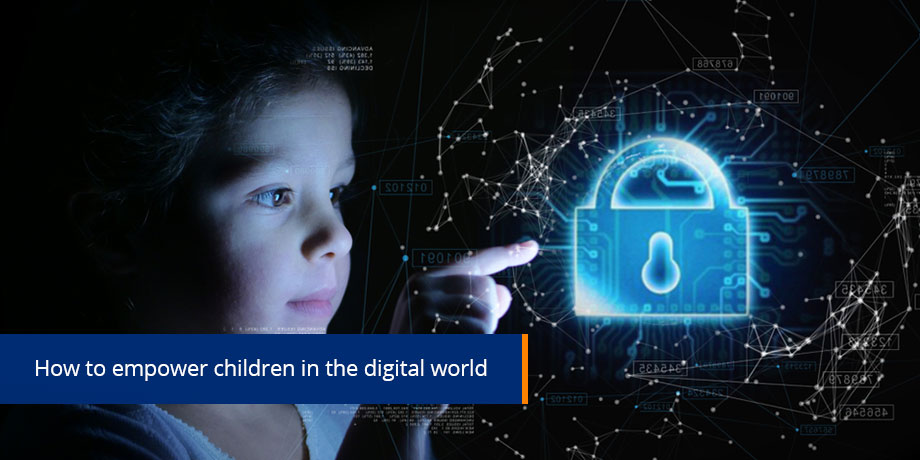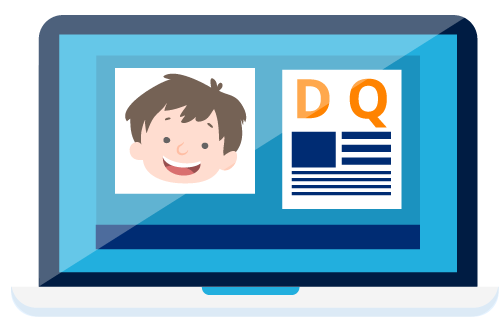
Being constantly connected to the digital world through our smartphones, no matter where we are, enables us to post a quick update on social media or read an instant message. But, in doing so, are we not compromising our well-being? While not yet a common term, the concept of “cyber wellness” has become part of our everyday lives.
What is cyber-wellness?
It’s about the positive well-being and the forming of good habits by internet users to maintain a healthy balance between our online and offline selves
This requires self awareness and proactive management – qualities that elude many adults. It’s not surprising that cyber wellness is particularly tough for children to achieve and maintain.
A recent global study carried out by the DQ Institute on South African children between the ages of 8-12 years highlighted a higher risk to cyber threats than the average child of the same age globally. The study says 64% of children in South Africa are vulnerable to cyber risks, with cyberbullying the highest risk at 55% (this is 8% higher than the global average).
The study further quantifies the percentage of SA children surveyed that have:
- been victimised through cyber bullying in the past year – 55%
- been involved in online sexual behaviours – 18%
- chatted and met online strangers in real life – 11%
- met the criteria for game addiction – 9%
One of the key issues highlighted in the study is the amount of time children spend engaged in entertainment online. Children between the ages of 8-12 on average spend 31 hours per week entertaining themselves with an online device. This is only one hour less than the global average.
What this implies, is that children within this age group are spending nearly 4.5 hours per day on digital devices for entertainment alone. This number goes up when including the time required to complete homework using an internet-connected device.
Other interesting findings
- Young children (8-12 years old) are actively using social media websites and apps. 89% Of SA children surveyed are using social media services and 33% of these children qualify as ‘highly active’ on these platforms.
- Children who own mobile phones in SA tend to spend 18 hours more screen time per week and therefore have a 43% higher chance in becoming involved in cyber risk compared to those without mobile phones and who are not highly active social media users.
- The top three online activities are watching videos, sending messages via phone applications and playing video games. WhatsApp and YouTube are the most used platforms at 77% and 54% respectively.
How can we empower children to convert risks into opportunities?
Fortunately, it’s not too late for parents and educators to reverse the tide. Disconnecting children from the digital world due to fear of cyber risk is not a realistic option when access to the Internet is increasingly being viewed as a human right. It is also important to acknowledge the positive impact technology can have on children, and how access to the digital world will equip them with skills to operate in the digital workplace.

Education is the first step
Our children need to be equipped with information and skills that make them resilient to cyber-risks and help to maximize their opportunities in the digital world. Children need to develop Digital Intelligence – a comprehensive set of skills that will help them thrive in their digital futures.
We need to actively help children develop a strong identity as a responsible digital citizen, by helping them:
- Be disciplined in their usage of digital media and technology
- Understand the basic nature of online communication
- Develop cognitive critical reasoning about online information, contents and contacts
- Proactively protect themselves from cyber-risks
- Cultivate healthy social-emotional relationships with others

It takes a village
Empowering children with digital intelligence is only the beginning. Building a safe support network for them is also crucial – from caring parents and capable teachers to supportive communities. At a national level, all stakeholders in the digital ecosystem should put their efforts together to develop an “ethical digital ecosystem” – where every child is safe and protected and has their Rights of the Child respected, a as well as being afforded with equal opportunities to thrive in their digital future.
To achieve this goal, all aspects of digital life needs to be managed – from internet access points, networks, family digital culture, school education, ICT business practices, civic sector support and government policies in the digital ecosystem – and should have proper principles and tools in place to ensure the safe, responsible and ethical use of technology.

Add DQ as a vaccine
The #DQEveryChild movement is described as a ‘vaccine against cyber risks’ which equips children with digital citizenship skills that protect them at the start of their digital lives. Digital citizenship programmes are usually not easy to implement at a national level however, due to the following challenges (extracted from the DQ Institute website):
- Lack of a comprehensive research-based curriculum for digital citizenship.
- Limited topic expertise among teachers.
- Difficulty in implementation of effective assessment and feedback mechanisms.
To help overcome these issues #DQEveryChild movement provides an online platform: DQ World, from which 8-12 year olds can self learn digital citizenship skills. This way, quality, digital citizenship education can easily be implemented into primary education systems.
Did you enjoy the read? Then be sure to subscribe to our blog to receive more great posts from our expert bloggers.















